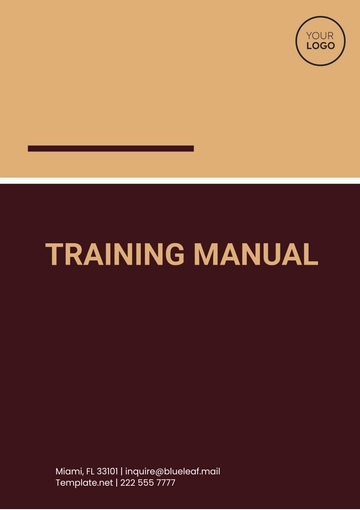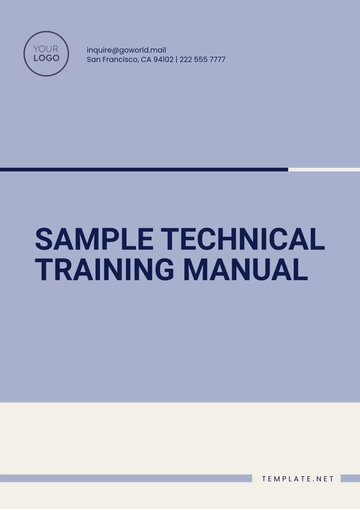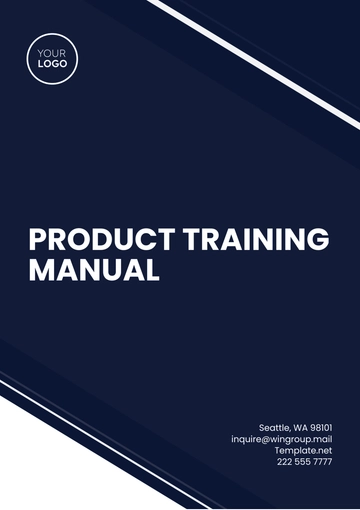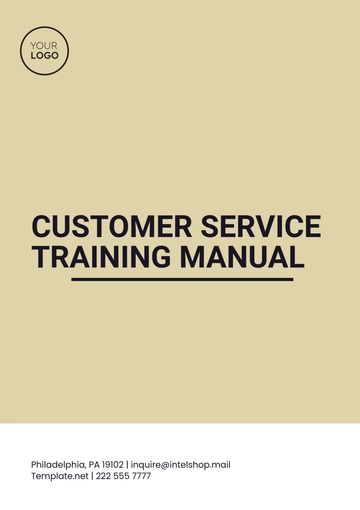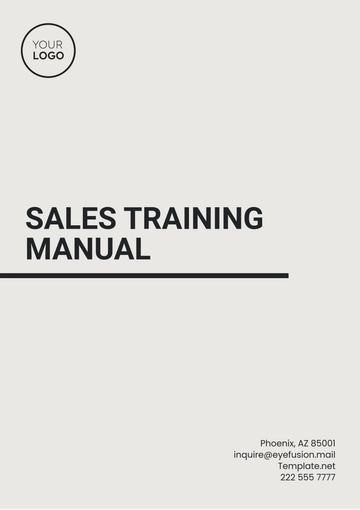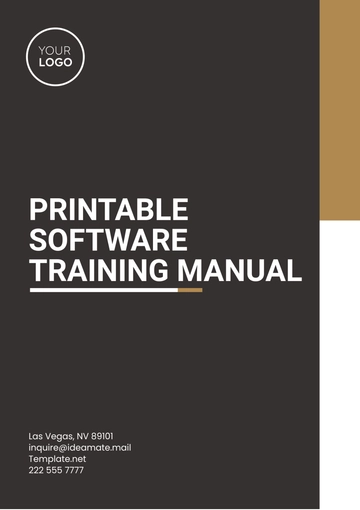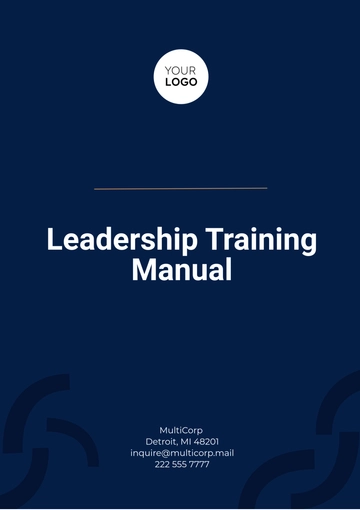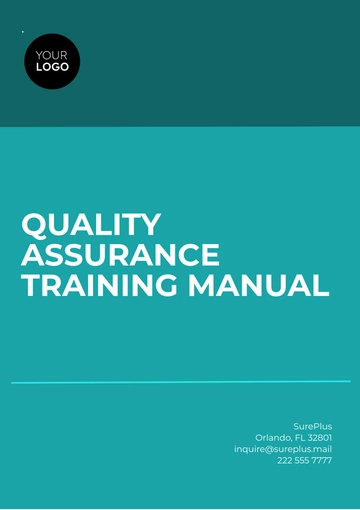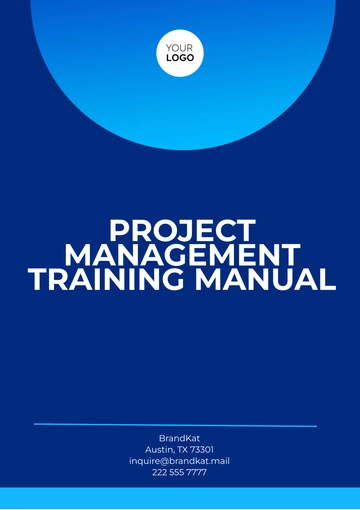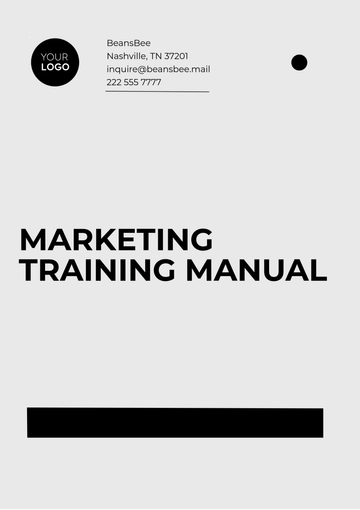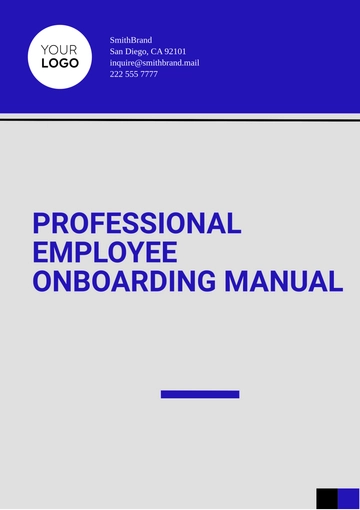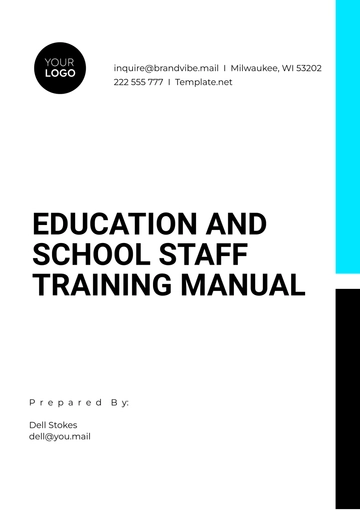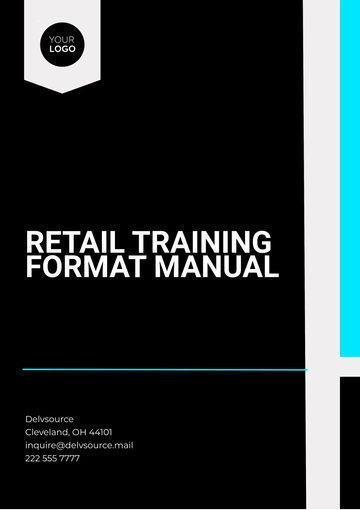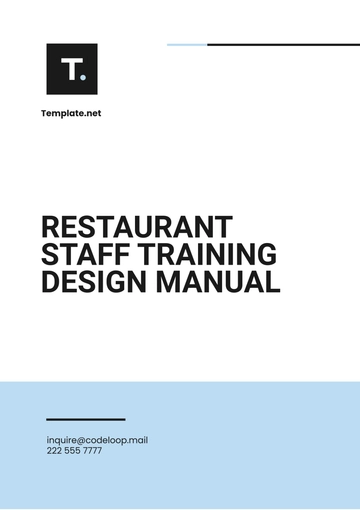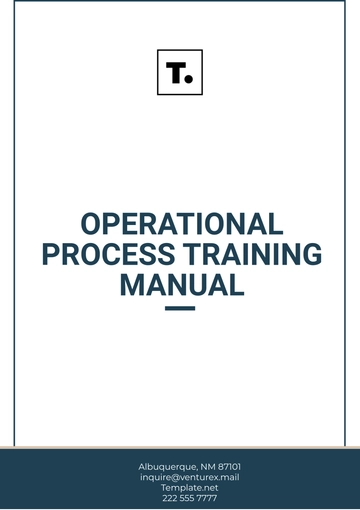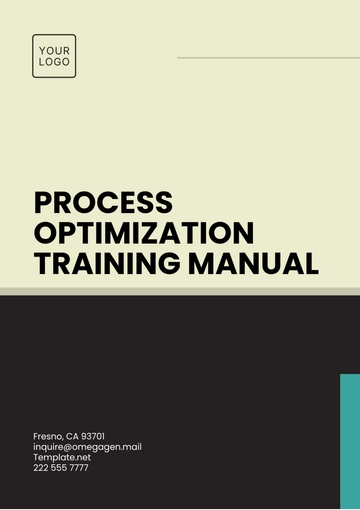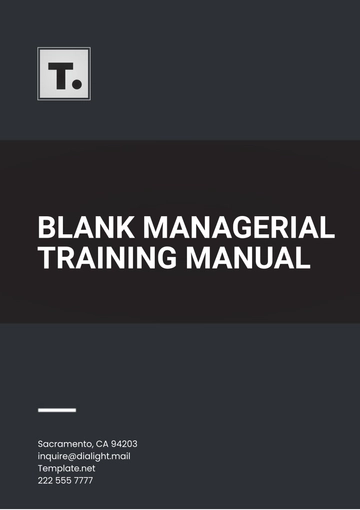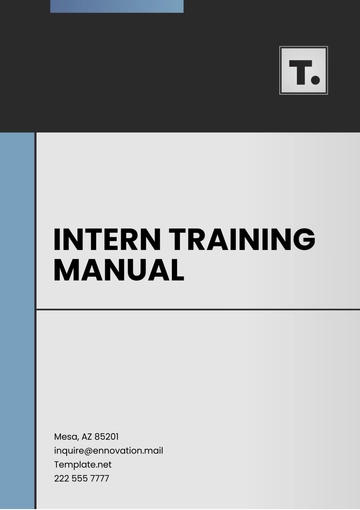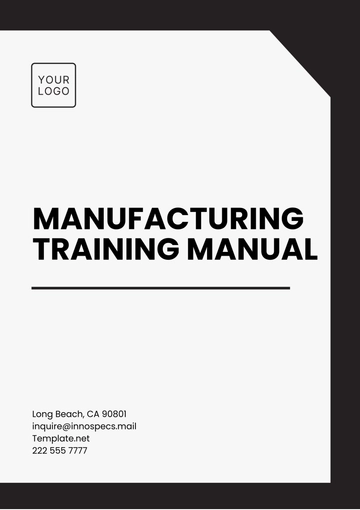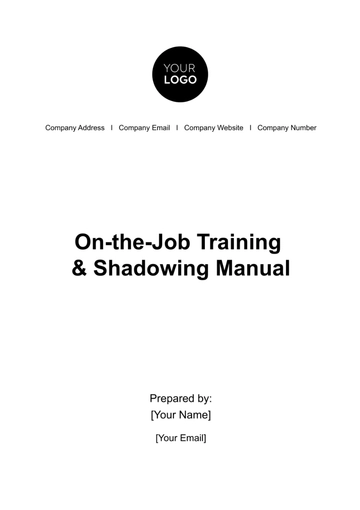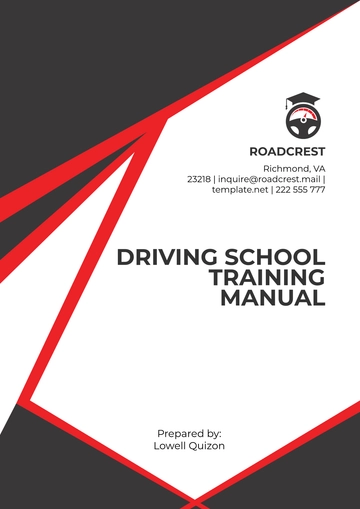Free Agriculture Employee Training Manual
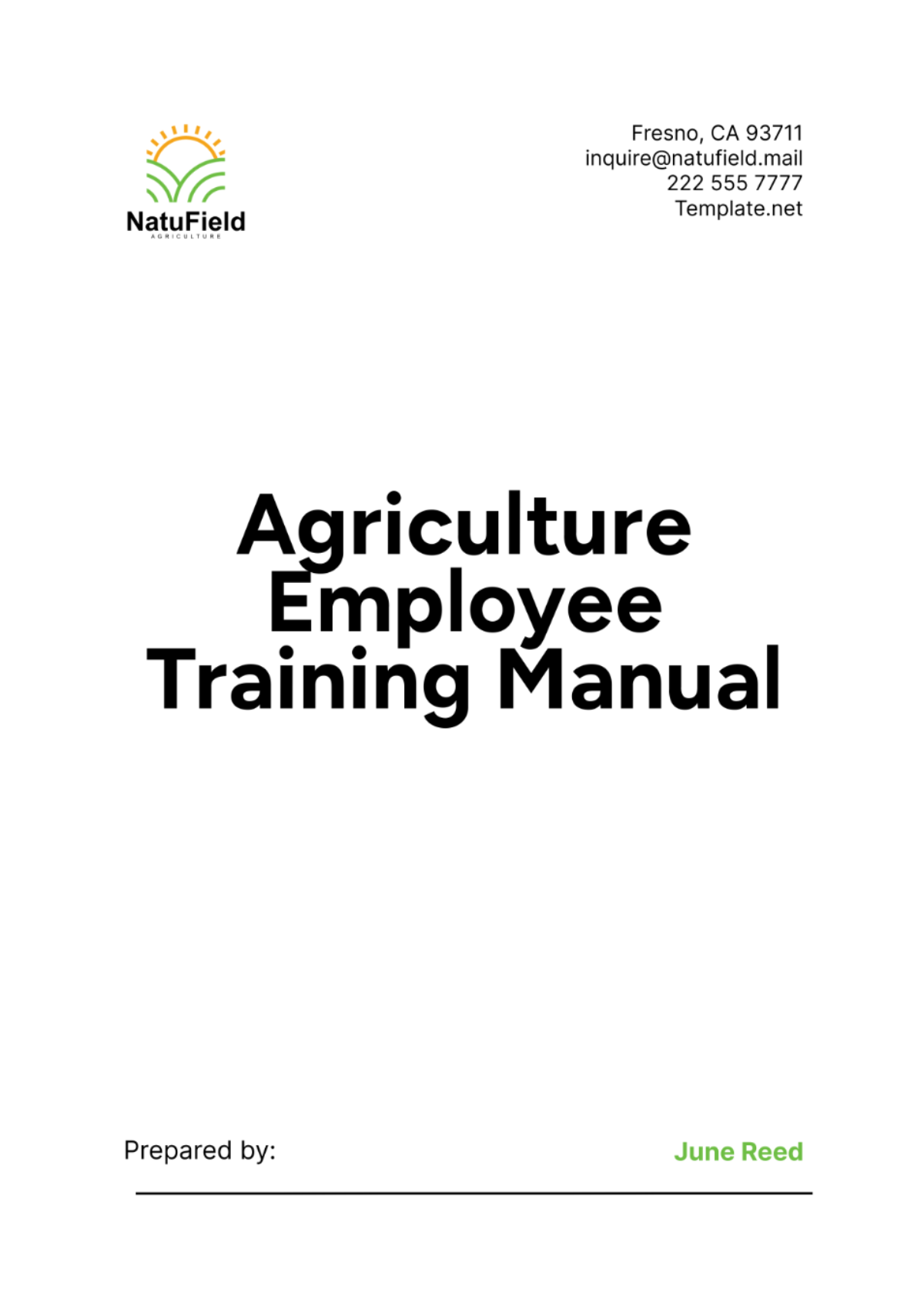
I. Introduction to Agricultural Operations
A. Overview of the Company
Welcome to [Your Company Name], a dedicated enterprise with a deep passion for sustainable agriculture. Nestled within a sprawling expanse of [00] acres of fertile land, our farm stands as a testament to eco-friendly and innovative farming techniques. We cultivate a diverse array of crops, with our key produce including [Key Crops], each meticulously grown and harvested to meet the highest standards of quality. Our crops are distributed both locally and regionally, ensuring that communities can enjoy fresh, sustainably sourced food. At [Your Company Name], we take immense pride in our unwavering commitment to quality and environmental stewardship, constantly striving to set new benchmarks for excellence in the agricultural industry.
B. Mission and Values
At [Your Company Name], our mission is to cultivate nutritious, high-quality crops while preserving natural resources and promoting community well-being. We achieve this by embracing sustainable farming techniques and fostering a culture of innovation and responsibility. Our values of integrity, collaboration, and environmental stewardship guide every aspect of our operations, ensuring that we contribute positively to both our industry and our community.
C. Importance of Training
Training at [Your Company Name] is not just about learning tasks; it's about understanding how each role contributes to our larger mission. By receiving comprehensive training, you will gain the knowledge and skills necessary to uphold our standards of quality, safety, and environmental sustainability. Your training ensures that you are well-prepared to perform your duties efficiently, safely, and in alignment with our values, setting you up for success in your career with us.
II. General Policies and Procedures
A. Employment Policies
Equal Employment Opportunity
At [Your Company Name], we are committed to providing equal employment opportunities to all individuals without regard to race, color, religion, gender, national origin, age, disability, or any other characteristic protected by law. We believe in a diverse workforce that reflects the communities we serve, fostering an inclusive and supportive workplace environment.
Anti-Discrimination and Harassment Policies
Discrimination or harassment of any kind is strictly prohibited at [Your Company Name]. We maintain a zero-tolerance policy towards any behavior that undermines respect and dignity in the workplace. Employees are encouraged to report any incidents of discrimination or harassment promptly, and all complaints will be investigated thoroughly and confidentially.
B. Workplace Safety
Occupational Health and Safety Regulations
Safety is paramount at [Your Company Name]. All employees are required to comply with occupational health and safety regulations, including those related to hazardous materials, equipment operation, and emergency procedures. Regular safety training sessions and updates are provided to ensure that everyone understands their responsibilities and knows how to respond in case of emergencies.
Personal Protective Equipment (PPE)
Proper use of PPE is essential to maintaining a safe working environment. Depending on your role, you may be required to wear items such as gloves, safety goggles, helmets, or respiratory protection. Training on the selection, use, and maintenance of PPE will be provided to ensure that it effectively protects you from workplace hazards.
C. Environmental Stewardship
Compliance with Environmental Regulations
[Your Company Name] is committed to environmental stewardship and compliance with all applicable environmental laws and regulations. We actively monitor our operations to minimize environmental impact, including soil conservation, water management, and waste reduction practices. Our goal is to preserve natural resources and promote sustainable agriculture for future generations.
Sustainable Farming Practices
We integrate sustainable farming practices into our daily operations to enhance soil health, conserve water, and reduce our carbon footprint. Techniques such as crop rotation, cover cropping, and integrated pest management (IPM) are utilized to maintain ecosystem balance and optimize crop yields. Training will cover these practices to ensure that you understand their importance and how to implement them effectively.
III. Farm Equipment and Machinery Operation
A. Equipment Safety
Inspection and Maintenance Procedures
Before each use, thoroughly inspect all farm equipment for any signs of wear, damage, or malfunction. Report any issues immediately to the maintenance team. Regular maintenance schedules are in place to ensure that equipment operates safely and efficiently throughout the season.
Safe Operation Techniques
Proper training on safe equipment operation is critical to prevent accidents and ensure employee safety. Always follow manufacturer guidelines and safety protocols when operating machinery. This includes maintaining a safe distance from moving parts, using equipment only for its intended purpose, and avoiding distractions while operating machinery.
B. Machinery Operation
Handling Tractors and Implements
Tractors are essential for various farm tasks, including plowing, planting, and harvesting. Learn how to operate tractors safely, including attaching and detaching implements correctly. Familiarize yourself with the controls and indicators to operate machinery effectively and efficiently.
Use of Harvesting Equipment
Harvesting equipment such as combine harvesters and fruit pickers require specialized training due to their complexity and potential hazards. Understand the specific safety precautions and operational procedures for each type of harvesting equipment used on our farm. Always follow safety guidelines to protect yourself and maintain equipment integrity.
IV. Crop Management and Agricultural Practices
A. Soil Preparation and Fertilization
Soil Testing and Analysis
Soil testing is conducted regularly to assess nutrient levels, pH balance, and soil health. Based on the results, fertilization plans are customized to meet crop requirements while minimizing environmental impact. Learn how to interpret soil test reports and apply fertilizers accurately and efficiently.
Application of Fertilizers
Proper application of fertilizers is crucial for maximizing crop yields while minimizing nutrient runoff and groundwater contamination. Training will cover different methods of fertilizer application, such as broadcast spreading or precision farming techniques, ensuring that nutrients are delivered to plants effectively.
B. Planting and Cultivation Techniques
Seed Selection and Planting Methods
Selecting high-quality seeds adapted to our local climate and soil conditions is essential for successful crop production. Understand the factors influencing seed selection, such as disease resistance, yield potential, and market demand. Learn proper planting techniques to achieve optimal seed placement and germination rates.
Irrigation and Water Management
Efficient water management is critical for crop health and yield optimization. Training will cover irrigation methods, scheduling, and monitoring techniques to ensure that plants receive adequate water without wastage. Understand how to adjust irrigation practices based on weather conditions and plant growth stages to promote water conservation and maximize efficiency.
V. Pest and Disease Management
A. Identification of Pests and Diseases
It is essential to gain the knowledge and ability to recognize and identify the various common pests and diseases that have the potential to adversely affect our crops. The importance of early detection of these harmful agents cannot be overstated, as it allows for the timely implementation of effective pest management strategies. By taking such proactive measures, we can significantly mitigate and minimize the damage inflicted upon our crops, thereby safeguarding their health and productivity.
B. Integrated Pest Management (IPM) Strategies
Our approach to pest management emphasizes integrated pest management (IPM) techniques. This includes using biological controls, such as natural predators, and cultural practices to reduce pest populations without relying solely on chemical pesticides.
Biological Controls
Utilize beneficial insects and organisms to control pest populations naturally, reducing reliance on chemical treatments and promoting ecological balance.
Chemical Controls
When necessary, employ approved pesticides judiciously and according to label instructions to minimize environmental impact while effectively managing pest outbreaks.
VI. Livestock Care and Management
A. Animal Welfare Practices
Ensuring the well-being of our livestock is of the utmost importance and should be considered a top priority. Therefore, it is essential to educate oneself on the proper handling techniques that can significantly reduce and minimize the stress experienced by the animals during both handling and transport processes. This knowledge is crucial in maintaining the health and safety of the livestock, as well as ensuring that they are treated with compassion and respect throughout these procedures.
B. Health and Disease Prevention
In order to ensure the overall well-being and health of the herd, it is essential to implement a series of proactive measures aimed at preventing diseases. This comprehensive approach should include the establishment and adherence to vaccination protocols, which involve regularly scheduled vaccinations to protect the animals from various illnesses. Furthermore, it is important to conduct inspections by veterinarians on a regular basis to monitor the health status of the herd, identify any potential health issues early, and address them promptly. By adopting these preventive strategies, the risk of disease outbreaks can be significantly reduced, thereby promoting a healthy and thriving herd.
Vaccination Protocols
Follow scheduled vaccination programs to protect livestock from common diseases prevalent in our region.
Veterinary Care
Understand the signs of illness in livestock and know how to promptly report and respond to health concerns. Regular veterinary care is essential for maintaining animal health and productivity.
VII. Harvesting and Post-Harvest Handling
A. Harvesting Techniques
To ensure the highest quality and freshness of our produce, it is imperative that we master the appropriate harvesting techniques. This involves being knowledgeable about the optimal time to harvest each type of produce to capture peak flavor and nutritional value. Additionally, we must handle the produce with care and precision, employing gentle handling methods to avoid bruising or damaging the delicate fruits and vegetables. By prioritizing timely and careful harvesting practices, we can significantly reduce the likelihood of any damage occurring to the produce. Consequently, this allows us to maintain the integrity and appeal of our products, ensuring that they are ready and perfect for market distribution.
B. Storage and Packaging
Learn best practices for storing harvested crops to maintain freshness and extend shelf life. Proper packaging techniques ensure that our products meet market standards for appearance and quality.
Storage Facilities and Conditions
Understand the optimal conditions for storing different types of crops, including temperature and humidity requirements. Regular monitoring helps prevent spoilage and preserve product quality.
Packaging Standards
Follow standardized packaging procedures to ensure consistency and appeal in our products. Proper labeling and handling instructions help maintain customer satisfaction and product integrity.
VIII. Regulatory Compliance and Recordkeeping
A. Compliance with Agricultural Laws and Regulations
In order to ensure the proper functioning of our agricultural operations and to maintain the trust and confidence of our consumers in the quality and safety of our products, it is imperative that we strictly adhere to all pertinent agricultural laws. This includes, but is not limited to, regulations related to food safety and the legal requirements governing labor practices. By diligently following these essential legal standards, we not only guarantee the lawful operation of our business but also reinforce the integrity and reliability of the products we offer to our customers.
B. Recordkeeping Requirements
Maintain accurate records of farm operations, including planting schedules, pesticide applications, and harvest yields. Detailed recordkeeping supports traceability and accountability, aiding in regulatory inspections and business decision-making.
Farm Operation Records
Document daily activities such as planting, irrigation, and crop management practices. These records provide a historical account of farm operations and support future planning and analysis.
Employee Training Documentation
Keep records of employee training sessions and certifications to demonstrate compliance with safety protocols and regulatory requirements. Training documentation also facilitates continuous improvement and professional development initiatives.
IX. Emergency Procedures and Crisis Management
A. Emergency Response Plans
It is of utmost importance that you take the time to thoroughly acquaint yourself with our established emergency response procedures, which have been meticulously designed to address various incidents, including fires, natural disasters such as earthquakes or floods, and medical emergencies. By doing so, you will be better prepared to understand and implement the necessary steps to handle these situations effectively. Clear and precise communication, coupled with immediate and decisive action, is absolutely critical in these scenarios to ensure the safety and well-being of all personnel involved.
Moreover, adhering to these procedures can significantly reduce the risk of injuries and help to minimize the extent of damage to property and assets. Therefore, we strongly encourage you to review, comprehend, and practice these emergency response measures regularly so that you can respond promptly and efficiently in the event of an emergency.
B. Crisis Communication
In the event of a crisis, effective communication is crucial. Internal communication protocols outline how information is disseminated among staff, while external stakeholder engagement strategies ensure transparency and timely updates to customers, suppliers, and the community.
Internal Communication Protocols
Establish communication channels and procedures for notifying employees about emergency situations and coordinating response efforts.
External Stakeholder Engagement
Maintain open lines of communication with external stakeholders, including regulatory agencies, media outlets, and local authorities. Transparent communication builds trust and enhances our reputation as a responsible agricultural operation.
X. Conclusion and Feedback
A. Recap of Training Objectives
Take a moment to thoughtfully consider and think back on the primary learning objectives that have been addressed and emphasized throughout the entirety of your training program. After doing so, critically examine and assess the extent to which these specific learning objectives correspond with and uphold our company's overarching mission and core values. By meticulously reviewing this alignment, you will gain a clearer understanding of how the skills and knowledge you have acquired during your training support and advance our organizational goals and ethical principles.
B. Feedback Mechanisms for Continuous Improvement
We highly value the feedback and insights of our participants. Therefore, we kindly request that you share your suggestions on how we can further enhance and optimize our training programs as well as our operational practices. These suggestions are instrumental to our ongoing efforts to improve and maintain the high standards of excellence that we strive to uphold in the field of agriculture. Continuous improvement is not just a goal, but a fundamental aspect of our commitment to achieving and sustaining excellence in all that we do. Your contributions are crucial in helping us refine our methods and deliver the best possible outcomes.
- 100% Customizable, free editor
- Access 1 Million+ Templates, photo’s & graphics
- Download or share as a template
- Click and replace photos, graphics, text, backgrounds
- Resize, crop, AI write & more
- Access advanced editor
Create a streamlined Agriculture Employee Training Manual with ease using Template.net's editable and customizable template. Tailor content effortlessly with the AI Editor Tool, ensuring precise customization to fit your farm's unique needs. Simplify training processes and uphold industry standards with this user-friendly template, designed to optimize efficiency and compliance in agricultural operations.
